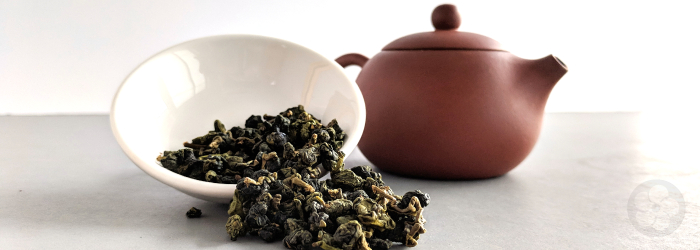What is GABA Tea?

Among the endless varieties of tea, most common names have poetic origins based on the appearance, fragrance, or traditional provenance of the tea style. GABA is a tea name that stands out as a modern, scientific acronym, lending gravitas to claims of extra health benefits. But what is it that makes this type of tea special?
GABA stands for gamma-aminobutyric acid, an amino acid that occurs naturally in the human brain to help neurons communicate effectively. It also occurs naturally in the tea plant, and in the 1980’s, Japanese researcher Dr. Tsushida Tojiro found that the natural levels could be increased in finished teas by processing them in anaerobic conditions. Since then, production of teas with high levels of GABA has been embraced in both Japan and Taiwan. Proponents of these modern teas claim that the extra GABA content can have an extra calming effect, and that drinking these teas can aid with stress, anxiety, depression, and sleep disorders. Though the scientifically derived process of making this type of tea certainly differentiates it from traditionally crafted varieties, we still take these bold health claims with a grain of salt.
The process first invented in Japan involves placing the maocha, or unfinished tea, in a sealed drum that is then pumped full of nitrogen to displace the oxygenated air. In this anaerobic environment, glutamate in the leaves is converted to GABA before the leaves are removed to continue the steps of traditional processing. In Japan, where GABA is a trend in many products beyond tea, regulations are strict, and teas labeled as GABA must contain at least 150mg in every 100g of tea. These stringent standards, combined with a healthy domestic market, means many of the GABA green teas produced in Japan never leave the country. More common on the international market are GABA oolong teas produced in Taiwan, which undergo various rates of oxidation along with this GABA-enriching process.
The process of creating extra GABA also affects the flavor of the finished tea, adding a distinct flavor note that is often described as sour and fruity, or being akin to sweet potatoes. While the specialized processing steps have not been adopted among tea producers in China, some unscrupulous vendors there may use artificial flavorings to imitate the style and take advantage of its growing popularity.
Moreover, there is some scientific skepticism about the actual effects of orally ingested GABA. Levels of GABA in the brain do not show significant increases after drinking GABA tea or taking supplements, since in these forms it is unable to penetrate the blood-brain barrier or enter the central nervous system. In addition, an excess of GABA in the body can have negative side effects, such as nausea, shortness of breath, or tingling in the extremities.
Notably, many of the benefits attributed to GABA teas are also associated with L-theanine, which is also found naturally within the tea plant. In fact, L-theanine has been shown to increase levels of GABA in the brain. Rather than selecting teas based on the levels of GABA they contain, we prefer to keep the focus on flavor, and select teas that we want to drink day after day. This way, we can take pleasure in luxurious flavor, as well as the cumulative benefits that come with the habit of a naturally healthy beverage.
Sign up for our newsletter to get blog updates in your inbox!





Comments on this post (0)